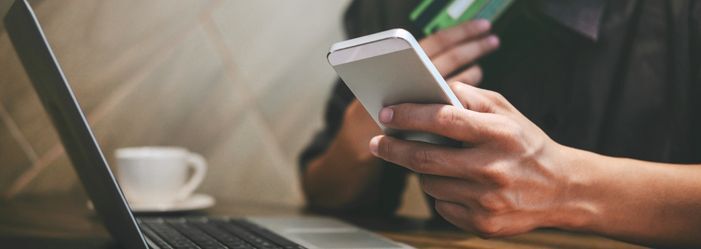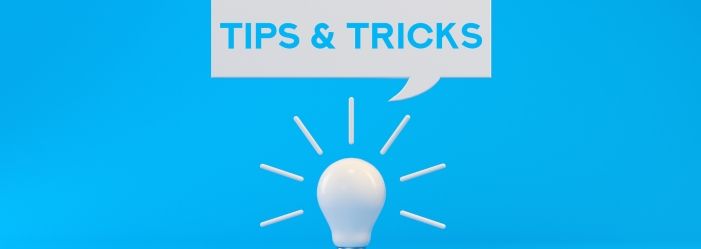Last Updated: March 21, 2024
Find out how to pay off your credit cards

Disclaimer: We are not qualified legal or tax professionals and are not giving advice. Always speak with a qualified professional before making any legal or financial decisions.
Struggling with credit card debt can feel overwhelming, but taking control is more achievable than you might think. With the right strategies and a solid plan, you can navigate your way to financial freedom.
In this post, we'll explore effective methods to tackle your credit card debt head-on, from prioritizing balances to leveraging smart payment tactics. Discover the actionable steps you can take today to start reducing your debt and improving your financial health.
Want to skip the article and speak directly to a debt specialist? Click here for a free consultation.
Stop Using Credit Cards
Your first step is to stop using your credit cards. Take them out of your wallet, stop all automatic monthly payments to your cards, and hope you do not have any emergencies.
Switch to using cash or a debit card for the majority of your purchases. Most people will spend less money when using cash. You will also need to plan ahead.
This leads to the next step which is budgeting.
Budget and Get Spending Under Control
The next mandatory step is to make a budget. If you do not know where your money is going, you can not control your spending and avoid overspending.
- Track your spending for at least a month. Count every penny you spend.
- Write down all your expenses and categorize them
- See where you can cut spending - remember, this is not forever!
Once you have insight into your spending habits, look for places to cut back or eliminate. What you cut is up to you. You may need to save money by changing your housing to a less expensive option, refinance your car loan, stopping auto-renewals on streaming services, etc. buy clothing from second-hand stores, stop eating out, make coffee at home, learn how to change the oil yourself if you have to.
You may want to sell off unused items. Save extra money to pay down your credit card balances. These changes are not forever! And you can budget for a splurge every once in a while. One way to reset your spending is a 30-day spending freeze. Check out this article for more information. There are many great budgeting apps and styles. Our blog has several articles on these.
Use a budgeting app like
Mint or
You Need A Budget to easily track your spending and net worth over time. These apps connect to your bank accounts to automatically categorize transactions and provide detailed reports on your spending habits. Look at cutting discretionary spending on non-essential items first before making changes to fixed costs like housing and transportation. Avoid "lifestyle inflation" where your spending grows to match income increases. As you earn more over time, avoid increasing your spending on wants vs. needs. Stay focused on necessities and direct extra funds to debt payoff. Refer to this guide on
how to pay off credit card debt on a tight budget for more tips on reducing spending.
Hopefully, you have freed up some money to dedicate to your credit card debt.
Start an Emergency Fund
Taking money away from bills to start an emergency fund might seem really stupid, but stick with us on this. Your emergency fund is pay any unexpected expense or emergency that most people use their credit card accounts for. By building up an emergency fund, you draw on this when you have an emergency, saving money in the long run.
Set up a separate savings account and trickle money into it. Your first goal is $1,000. If you use the funds for an emergency, build it back up. Eventually, you will want to save up three to six months of living expenses.
What is an emergency? Anything that threatens your ability to have food, shelter, or transportation. What is not an emergency? A great sale on game systems, new clothes, and any impulse purchase.
Having a small emergency fund of even $500 should take priority over aggressively paying down debt. This prevents you from reaching for credit cards again in a financial emergency. If you lose your job or have an unexpected medical bill, a starter emergency fund can cover those costs instead of going back into debt. Gradually build up your savings to 1-2 months of living expenses before focusing all extra cash on debt repayment. As the emergency fund grows over time, you'll have a larger buffer and safety net in the event of a crisis.
Now we will discuss how hard it is to pay off credit card debt.
The Minimum Payment Trap
Credit cards offer the opportunity to pay off your credit card debt using minimum payments. They even tell you how long it will take, provided you do not use your credit card again. But the minimum payment trap is designed to make the credit card companies a lot of money.
Starting with the same debt:
- Credit card balance: $6,000
- Current rate: 18.24%
- Payment: $240 a month
By using a credit card pay off calculator:
- Time to pay off: 32 months (almost 3 years)
- Pay interest charges of: $1,605
- Total paid: $7,605
You've paid it off twice as faster and only spent $1,605 in interest payments.
Since not everyone has the money to pay off your card in full or even double your payments, let's take a look at tricks to pay down your credit card debt.
Tips and Tricks to Pay Off Credit Card Debt

There are five different strategies to pay off debt. Which repayment method works for you depends on your unique situation. Remember, these count on you stopping using your credit cards and freeing up enough cash to pay off the debt. In these, you put every penny you can free up plus any unexpected windfalls toward your debt (once you have a small emergency fund).
The debt avalanche method focuses on highest highest-interest debt first, while the debt snowball method pays off the smallest balance first. The avalanche will save more on interest but the snowball gives the motivation of quick small wins. The avalanche prioritizes the math of the highest rates to save the most money, but the snowball lets you pay off a card faster to keep you motivated.
If using balance transfer cards, be aware deferred interest cards charge all the back interest if not fully paid off in the promo period. Opt for no-fee transfer cards with 0% intro APR. Read the fine print to understand exactly how the 0% interest promotions work and the implications if you don't pay in full by the deadline.
For debt consolidation loans, ask the lender if they offer options like temporarily lowered payments in case of financial hardship. This provides flexibility if money gets tight. Many lenders are willing to work with borrowers who show good faith efforts to repay their debts. Explore programs or short-term arrangements to lower payments during times of financial stress.
Debt settlement severely damages credit scores and risks being sued. View it as an absolute last resort option only if unable to keep up with minimum payments. Debt settlement has major consequences for your credit history and finances, and creditors may still take legal action against you for unpaid debts.
First,
see how to settle credit card debt before going to court and avoiding legal action, and
learn how to negotiate credit card debt directly with issuers before considering settlement.
Strategies include the debt avalanche method, debt snowball method, balance transfer credit card, debt consolidation loan, and debt settlement.
Since most people have more than one credit card with a balance, we will set up a different scenario so you can compare each method.
Here is the hypothetical debt:
- Credit card 1: $6000 at 18.45%
- monthly payment: $120
- Credit card 2: $10,000 at 20%
- monthly payment: $200
Let's look at each debt repayment plan and its pros and cons.
The Debt Avalanche Method
In the debt avalanche method, you first focus on paying off the smallest balance. In this case, you focus on paying off credit card 1 while keeping up payments on credit card debt 2. We've added $30 to credit card 1's payment.
- Payoff $6000 first
- Payments: $150 (toward the smallest balance) +$200
- Time to pay off: 7 years
- Interest paid: $13,274
- Total paid: $29,874
Once credit card 1 is paid off, all that minimum payment is added to credit card debt 2. Here's what happens to credit card debt after 7 years - the impact on your credit reports and scores.
The Debt Snowball Method
In the debt snowball method, you first focus on paying off the higher interest rate (credit card 2) while making minimum payments on the lesser interest rate debts. Once that one is paid off, you focus on the second highest interest rate.
- Pay off $10,000 first
- Minimum Payments: $230+$120
- Time to pay off: 7 years
- Interest paid: $13,557
- Total paid: $29,557
Once credit card 2 is paid off, all that payment is added to credit card 1.
As you can see, there is not much difference between the debt snowball method and the avalanche method in the time and interest payments. The biggest difference is in your personality. Like to see successful payoffs faster? Go with the avalanche method.
There are debt snowball/avalanche payoff comparison calculators online.
Balance Transfer Credit Cards
This type of debt payoff requires you to qualify for lower interest rates or zero-interest balance transfer credit cards for a specified intro period. You then pay off credit card 1 and 2 and focus on paying off the balance transfer card.
This requires that you be able to qualify for a credit card with a lower interest rate and can pay off the balance transfer credit card within the promotional period. Otherwise, the post-introductory interest rate can be very high. These often also come with balance transfer fees. You may not be able to transfer a very large credit card balance, but multiple balances may be an option.
- Transfer balances of $16,000
- Balance transfer fee 3% (you may be able to find a 0% transfer fee)
- Total amount to pay off: $16,480
- Time to pay off: 12 months (promotional period)
- Minimum payment: $1,374
- Total paid: $16,480
If you can afford to pay $1,374 every month for twelve months (in this example), you can be debt-free using balance transfer cards. However, if you can not, you risk putting yourself in a difficult financial situation again.
Debt Consolidation Loans
A debt consolidation loan means a lower interest rate loan, often a personal loan or home equity loan. You then pay off credit card debt and focus on paying off the loan until you are debt free.
If you can qualify for a personal loan that has lower interest and the monthly payments is lower than what you currently owe, this can be a good option. You must have a good credit score in order to get the best loan terms.
Home equity loans often have low interest, but failure to repay this debt consolidation loan can result in foreclosure.
- Find $16,000 loan
- Loan fee 0.5% (you may be able to find a 0% origination fee)
- Annual interest rate: 6%
- Total amount to pay off: $16,080
- Time to pay off: 5 years
- Loan Payment: $311
- Total paid: $18,653
Personal loans have better terms than the avalanche and snowball method and a longer pay off time. If you can pay the $350 you have been paying, you total repayment amount is $18,211.19 and you pay it off in 4.5 years. Before taking out debt consolidation loans, make certain you have a plan to repay them.
Debt Settlement
The final option is debt settlement. This method is only for people who can not make minimum payments and are considering bankruptcy. I
n this method, you stop paying your unsecured bills while building up a savings account. The debt settlement company negotiates with each creditor, and as the creditor settles, is paid off. The length of time depends on how much debt you have enrolled.
This method has two major drawbacks. First, it may damage your credit score. Second, the IRS may view the settlement as income, and you may end up with a substantial tax bill.
- Settle both debts for 30% - you owe $4800
- Debt settlement fee of 15% per month
- Monthly payment into a savings account: $555
- Time to pay off: 3 years
- Total paid: $19,968
- A possible tax bill of $11,200
As stated, this is the last option. If it seems like your best option, give the debt negotiators at Pacific Debt Relief a call.
Other Tricks
You can take a few other actions to help with your credit card debt.
- Contact the credit card issuer to request a lowered interest rate
- Ask that your due date be changed to one that matches your paydays
- Pay weekly instead of monthly
- Ask your payroll department to deposit a small amount into a different savings account before cutting your check - use that for a payoff
- Apply most or all of any windfalls toward your debt. Consider putting part into your emergency fund
- Find a way to make more money
Credit Scores
Paying off credit card debt creates changes in your credit report. By paying off debt, you improve your credit utilization score. By closing credit cards, your credit history is shortened and will negatively affect your credit score. Keeping but NOT using existing credit cards is a good move.
FAQs
Our Final Take
Getting out of credit card debt takes focus and commitment, but is an important goal for regaining control of your finances. Be aware of where your money is going by tracking spending and sticking to a budget that directs as much income as possible toward debt repayment.
Getting into high-interest debt is very easy. Credit card debt paying takes effort and focus. You must pay attention to where your money goes, control where it goes, and plan how you spend money.
No matter which method you use or if you combine the methods detailed above to pay debt faster, the most important factor is that you make the effort. Always read the fine print and understand the terms. You may benefit from speaking with a certified credit counselor who can help you understand your options, set up a budget, and even a debt management plan.
You may benefit from speaking with a certified credit counselor who can help you understand your options, set up a budget, and even a debt management plan tailored to your financial situation. Credit counseling services can provide personalized advice and accountability on the journey to becoming debt-free.
The road to financial freedom starts with a solid plan and commitment. You can take control of your credit card debt with focus and discipline. The payoff in peace of mind and stability is well worth the effort.
If you are struggling with overwhelming debt and want to explore your debt relief options, Pacific Debt Relief offers a free consultation to assess your financial situation. Our debt specialists can provide objective guidance relevant information and support to help find the right debt relief solution.
*Disclaimer: Pacific Debt Relief explicitly states that it is not a credit repair organization, and its program does not aim to improve individuals' credit scores. The information provided here is intended solely for educational purposes, aiding consumers in making informed decisions regarding credit and debt matters. The content herein does not constitute legal or financial advice. Pacific Debt Relief strongly advises individuals to seek the counsel of qualified professionals before undertaking any legal or financial actions.
✔ Accredited by Better Business Bureau with BBB A+ rating (4.93 rating and 1678 reviews)
✔ US News and World Reports and Bankrate ranked Pacific Debt Relief as one of “The Best Debt Relief Companies of 2024”
✔ 6.9 star rating by BestCompany.com (over 2379 client reviews)
✔ 4.8 star rating by TrustPilot based (over 1613 verified consumer reviews)
✔ ConsumerAffairs.com Accredited (over 544 verified reviews with an average rating of 5 stars)
✔ A Top 10 Rated Compan by TopTenReviews.com , ConsumersAdvocate.com and Top10debtconsolidation.com
✔ 4.6 star rating by Google (229 client reviews)
✔ 100% rating by SuperMoney (9 client reviews)
Reduce Your Credit Card Debt By Up to Half

BBB Reviews | 4.9/5.0 Rating









 Do Not Sell My Personal Information
Do Not Sell My Personal Information